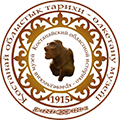In October 1973, at a solemn meeting in honor of the 20th anniversary of the development of virgin and fallow lands, it was decided to perpetuate the feat of the first-born in the city of Kostanay on the Forecourt.
On November 12, 1973, a closed All-Union competition of creative teams for the creation of a monument project was announced. May 12, 1975 - the author's team consisting of sculptor Mikhail Smirnov, architect Anatoly Semenov from Moscow and Kostanay architect Alexander Timoshechkin was recognized as the winner of the competition. In 1976, the Art Expert Council of the USSR Ministry of Culture approved the main provisions of the monument.
In 1983, by the decision of the City Executive Committee, Komsomolskaya Square appeared in Kostanay. It was decided to erect a monument to the first Saints on it, since there was not enough space on the Station Square.
All the elements of the monument in clay were made in Moscow, then in Minsk they made the arable land and the first furrow on this basis. The figures of the sowers and the Ribbon of Glory were cast in bronze at the Leningrad Monument-Sculpture factory. The load-bearing structure was developed in Alma-Ata, and the installation and granite work was carried out by the masters of Moscow, Kustanay and Rudny.
On October 13, 1984, the monument to the "Conquerors of Virgin Lands" was inaugurated with the participation of party, Soviet workers, production leaders, Komsomol members and pervotselinniki.
On December 10, 1984, by the decision of the City Executive Committee of Kostanay, the monument was accepted for state protection as a monument of history and architecture.
Description of the monument
The dating of the monument is 1984 .
Location, address: Kostanay, Tselinnikov Square
The composition of the monument consists of three figures and a long fluttering ribbon rising on a trapezoidal volume. Sculptures of young men represent sowers, girls – land managers walking along the first furrow. Behind them, a ribbon with the image of wheat ears flutters. On the ribbon of glory on the eastern and southern sides there are images of all stages of the virgin epic: from the first furrow, to the first victory, the first harvest. The tape is installed on the elevated part of the volume, the eastern face of which is beveled. The figures of the sowers and the girl, as well as the ribbon of Glory, are cast in bronze. The base is made of concrete, lined with granite slabs. The square is paved with paving stones.









